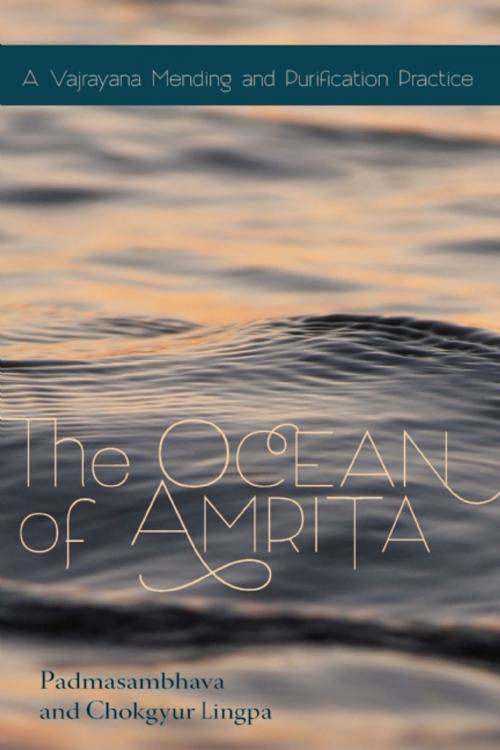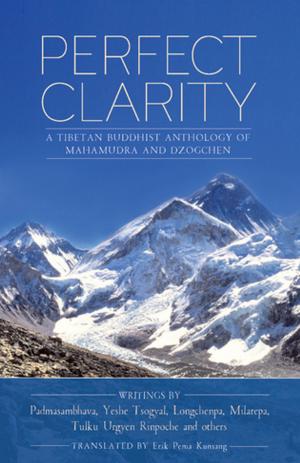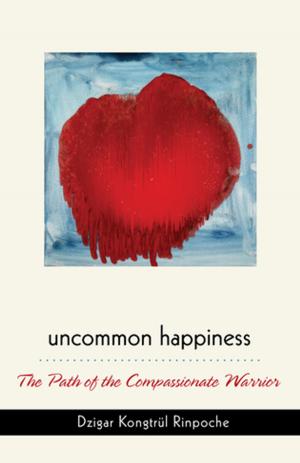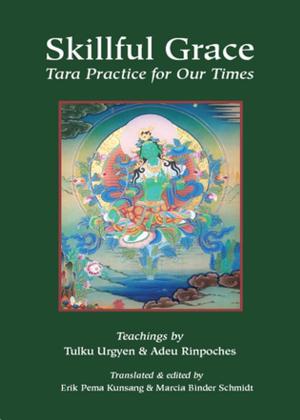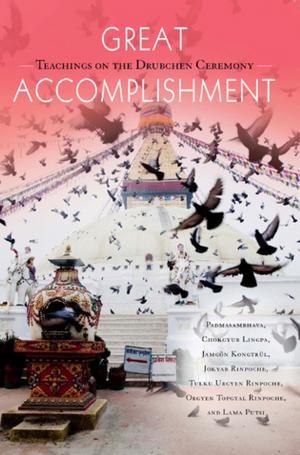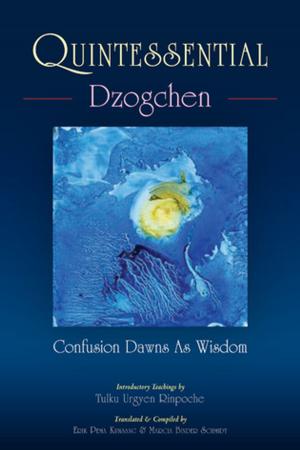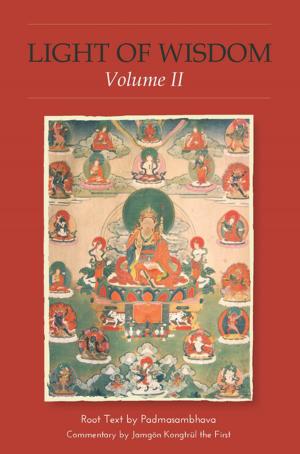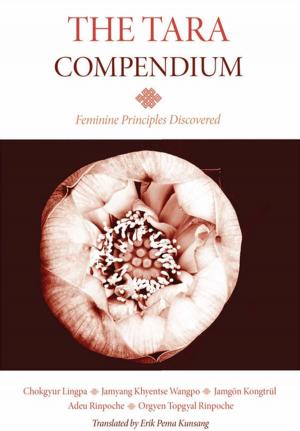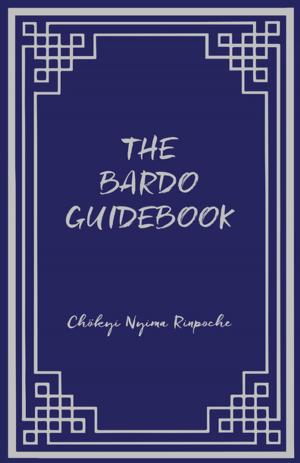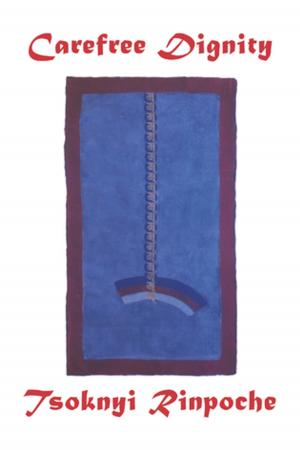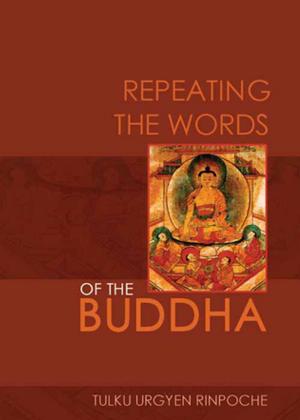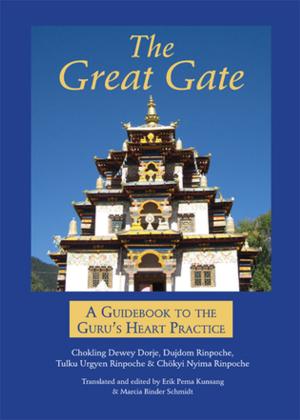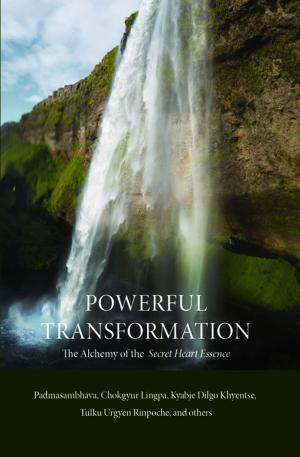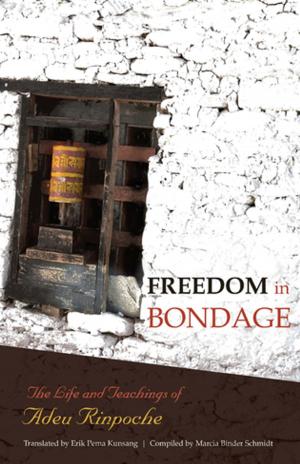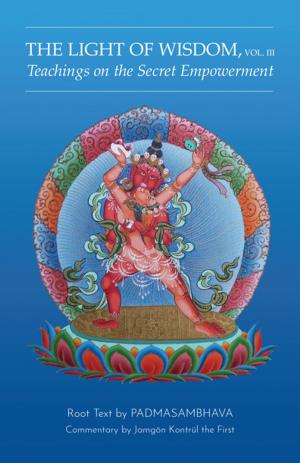Ocean Of Amrita
A Vajrayana Mending and Purification Practice
Nonfiction, Religion & Spirituality, Eastern Religions, Buddhism| Author: | Padmasambhava Guru Rinpoche | ISBN: | 9789627341987 |
| Publisher: | Rangjung Yeshe Publications | Publication: | September 22, 2014 |
| Imprint: | Rangjung Yeshe Publications | Language: | English |
| Author: | Padmasambhava Guru Rinpoche |
| ISBN: | 9789627341987 |
| Publisher: | Rangjung Yeshe Publications |
| Publication: | September 22, 2014 |
| Imprint: | Rangjung Yeshe Publications |
| Language: | English |
The main focus of the Ocean of Amrita, a hidden teaching of Padmasambhava, is mending and purifying the vows that one has taken. Just like it is important to wash our clothes regularly to keep them clean and mend them when they are in need of repair; no matter what level of Buddhist practice you might be involved in, it is also important to regularly mend and purify your commitments. It is practically impossible for ordinary people like ourselves to keep any of the three levels of precepts, whether those of individual liberation (pratimoksha), the bodhisattva trainings or the samayas of Vajrayana. The tendency to go against the precepts constantly increases due to strengthening the habit of breaking promises and not sticking to what we have committed ourselves to. Therefore it is absolutely necessary to atone for our failings by regularly doing a mending and purification practice.
Within the collection of Chokgyur Lingpa’s termas is a cycle known as Tukdrub Barchey Künsel that contains great accomplishment practices (drubchen). The one I am going to discuss here is entitled The Ocean of Amrita (Ngakso Drubchen), the main purpose of which is the mending and purification of one’s Vajrayana commitments. The text for this ritual is included in the seventeenth chapter of The Essence Manual of Oral Instructions (Sheldam Nyingjang). During this nine-day ritual one visualizes oneself as Padmasambhava with the wrathful deities inside one’s skull and the peaceful deities within one’s heart. There are an incredible amount of details to visualize in a great accomplishment practice, but the completion stage is woven into the practice too. However, it is important to keep in mind that the main principle of the ritual is to fully mend and purify our vows and commitments, especially those of Vajrayana. That is the bottom line. Very kindly Padmasambhava designed this practice with people like us in mind, for just by doing this practice we can totally purify and restore all of our Vajrayana commitments.
Within the collection of Chokgyur Lingpa’s termas is a cycle known as Tukdrub Barchey Künsel that contains great accomplishment practices (drubchen). The one I am going to discuss here is entitled The Ocean of Amrita (Ngakso Drubchen), the main purpose of which is the mending and purification of one’s Vajrayana commitments. The text for this ritual is included in the seventeenth chapter of The Essence Manual of Oral Instructions (Sheldam Nyingjang). During this nine-day ritual one visualizes oneself as Padmasambhava with the wrathful deities inside one’s skull and the peaceful deities within one’s heart. There are an incredible amount of details to visualize in a great accomplishment practice, but the completion stage is woven into the practice too. However, it is important to keep in mind that the main principle of the ritual is to fully mend and purify our vows and commitments, especially those of Vajrayana. That is the bottom line. Very kindly Padmasambhava designed this practice with people like us in mind, for just by doing this practice we can totally purify and restore all of our Vajrayana commitments.
The main focus of the Ocean of Amrita, a hidden teaching of Padmasambhava, is mending and purifying the vows that one has taken. Just like it is important to wash our clothes regularly to keep them clean and mend them when they are in need of repair; no matter what level of Buddhist practice you might be involved in, it is also important to regularly mend and purify your commitments. It is practically impossible for ordinary people like ourselves to keep any of the three levels of precepts, whether those of individual liberation (pratimoksha), the bodhisattva trainings or the samayas of Vajrayana. The tendency to go against the precepts constantly increases due to strengthening the habit of breaking promises and not sticking to what we have committed ourselves to. Therefore it is absolutely necessary to atone for our failings by regularly doing a mending and purification practice.
Within the collection of Chokgyur Lingpa’s termas is a cycle known as Tukdrub Barchey Künsel that contains great accomplishment practices (drubchen). The one I am going to discuss here is entitled The Ocean of Amrita (Ngakso Drubchen), the main purpose of which is the mending and purification of one’s Vajrayana commitments. The text for this ritual is included in the seventeenth chapter of The Essence Manual of Oral Instructions (Sheldam Nyingjang). During this nine-day ritual one visualizes oneself as Padmasambhava with the wrathful deities inside one’s skull and the peaceful deities within one’s heart. There are an incredible amount of details to visualize in a great accomplishment practice, but the completion stage is woven into the practice too. However, it is important to keep in mind that the main principle of the ritual is to fully mend and purify our vows and commitments, especially those of Vajrayana. That is the bottom line. Very kindly Padmasambhava designed this practice with people like us in mind, for just by doing this practice we can totally purify and restore all of our Vajrayana commitments.
Within the collection of Chokgyur Lingpa’s termas is a cycle known as Tukdrub Barchey Künsel that contains great accomplishment practices (drubchen). The one I am going to discuss here is entitled The Ocean of Amrita (Ngakso Drubchen), the main purpose of which is the mending and purification of one’s Vajrayana commitments. The text for this ritual is included in the seventeenth chapter of The Essence Manual of Oral Instructions (Sheldam Nyingjang). During this nine-day ritual one visualizes oneself as Padmasambhava with the wrathful deities inside one’s skull and the peaceful deities within one’s heart. There are an incredible amount of details to visualize in a great accomplishment practice, but the completion stage is woven into the practice too. However, it is important to keep in mind that the main principle of the ritual is to fully mend and purify our vows and commitments, especially those of Vajrayana. That is the bottom line. Very kindly Padmasambhava designed this practice with people like us in mind, for just by doing this practice we can totally purify and restore all of our Vajrayana commitments.
